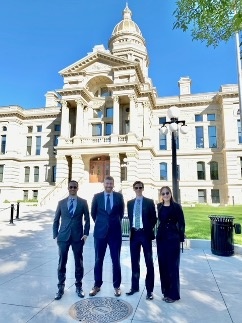United States
, 2023. The impact of return migration on employment and wages in Mexican cities. Journal of Urban Economics , 135 (May). Publisher's VersionAbstract
Pathways to Prosperity in Wyoming
#DevTalks: Easy to Say, Hard to Do / Leading Economic Change in Wyoming
What's the Point: Analyzing Growth Challenges in Wyoming
Reflections on Decarbonization: Wyoming vs. Japan
Student Stories: Assessing Decarbonization (and the Rodeo) in Wyoming
, 2021. Estimating the drivers of urban economic complexity and their connection to economic performance. Royal Society Open Science , 8 (9). Publisher's VersionAbstract
, 2006. Why the US Current Account Deficit is Sustainable. International Finance , 9 (2) , pp. 223-240. Publisher's Version
, 2007. The Valuation of Hidden Assets in Foreign Transactions: Why 'Dark Matter' Matters. Business Economics , 42 (1) , pp. 28-34. Publisher's VersionAbstract




